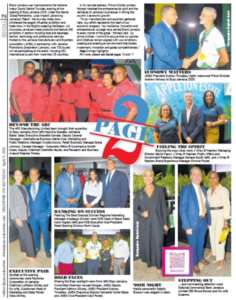Olympic Park stays on track with transformation
LONDON, England (AFP) — Five months after the London Olympic Park closed to the public, one thousand construction workers are toiling to transform it into an entirely new neighbourhood of the British capital.
Within a few years, the park in east London will be home to apartments, schools and wide green spaces, studded with the sports venues that have been scaled down since the momentous events of the Olympics and Paralympics.
Reporters, given a rare post-Games tour of the site yesterday, saw the distinctive temporary stands at the Aquatics Centre being dismantled and without the appendages, architect Zaha Hadid’s ‘sting-ray’ design is slowly emerging.
The pool’s capacity will be reduced from the 17,500 during the Games to 2,500, making it suitable for national competitions and community use.
Maintaining the organisers’ pledge to recycle the temporary venues, the Aquatics Centre’s stands are set for a new life at a racetrack in Miami.
In the basketball arena, which shook to the sound of delighted fans as Kobe Bryant’s US Dream Team won gold in the summer, they hope to have taken down the 10,000 seats by April.
Over at the Athletes’ Village, the competitors’ simple rooms are being transformed into 2,818 rather more luxurious flats, with the first tenants due to move in later this year. New houses and flats will also be built.
A school to serve the new residents is due to open by the end of the year and two more are under construction.
Surrounding it all will be a park, where once an industrial wasteland lay, after the £292 million ($465 million) of adaptation works are completed.
Planners hope that within 20 years, the Queen Elizabeth Olympic Park will be home to 8,000 people, with a third living in affordable housing — a boost in a city where rents are out of the reach of many.
The northern section of the park will open to the public in July.
Dennis Hone, chief executive of the London Legacy Development Corporation, told AFP: “We’re trying to make sure it’s the best of everything, so that we build houses, new neighbourhoods, on the Park, where people will come and live.
“But it will always have sport at the heart of the park, in terms of the iconic venues left over from the Olympics, and in terms of the landscape areas for people to enjoy.”
Despite the organisers’ optimism, a question mark remains over the centrepiece of the park, the 80,000-capacity Olympic Stadium which hosted athletics and the opening and closing ceremonies.
After much wrangling, Premier League football club West Ham United are the preferred bidders to move into the stadium on a full-time basis, with a final decision due to be made by March.
Meanwhile, it was announced this week that the stadium will host a series of concerts next summer, as well as the London Grand Prix athletics meeting on July 27, the anniversary of the Olympics opening ceremony.
Hone insisted that London would fulfil its promise to avoid the ‘white elephants’ that have haunted past Olympic cities, such as 2004 hosts Athens.
“There’s no chance it’s going to be like Athens. This won’t be tumbleweed, this is going to be a vibrant new community and neighbourhood for London,” he said.















